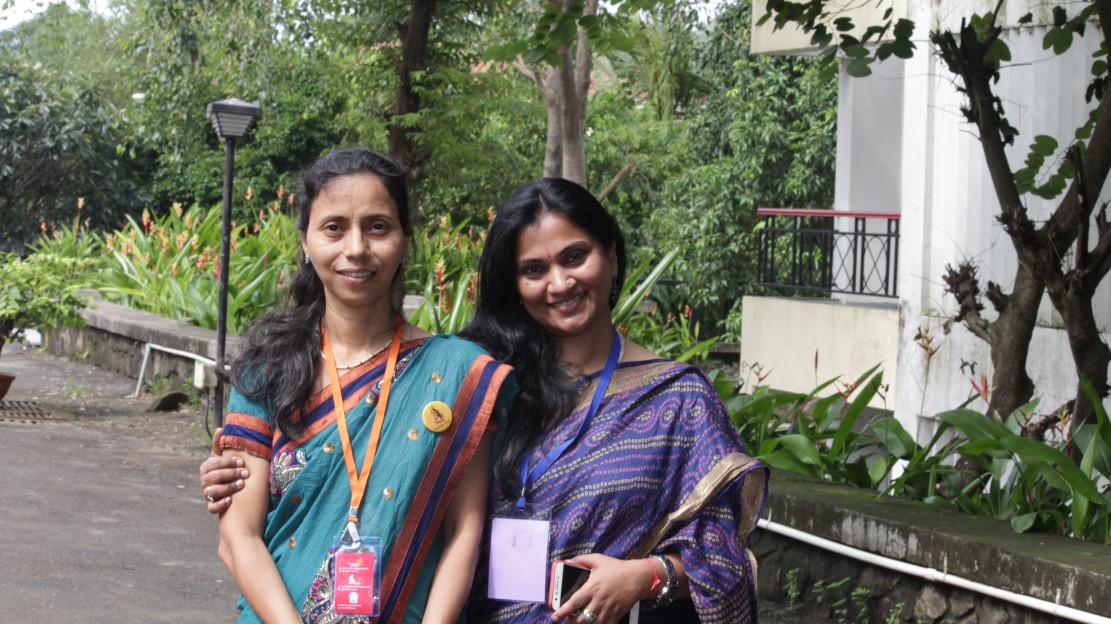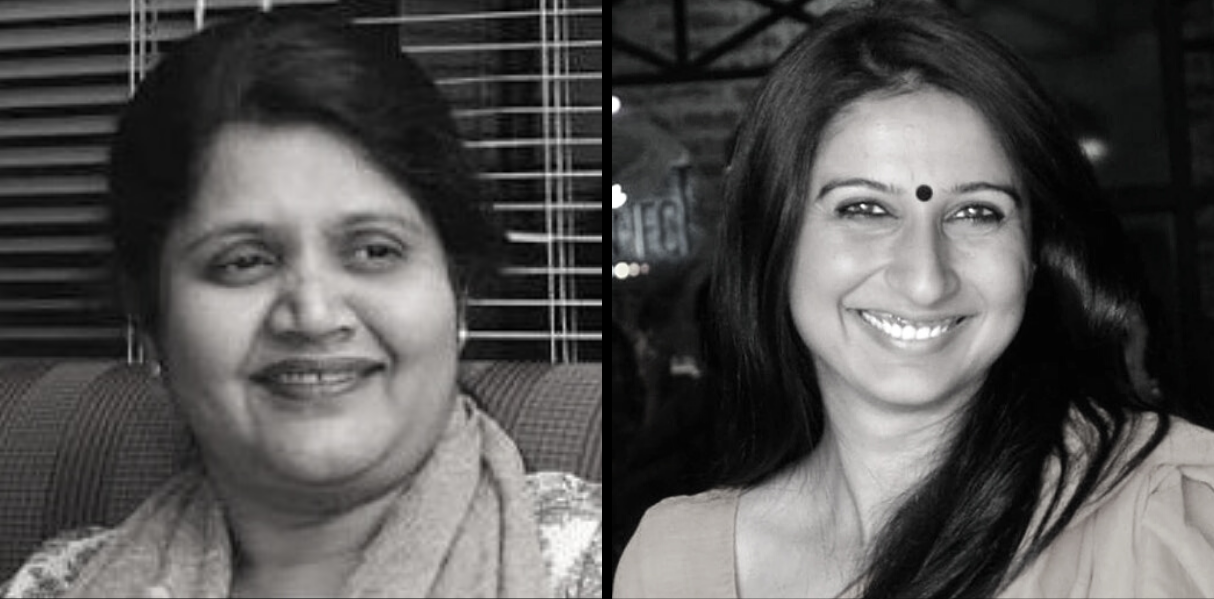Written By: Team Ungender
Nandita Gurjar joined Infosys in 1999 and founded the Learning and Development (L&D) unit to implement learning and training effectiveness while also setting benchmarks for growth and development. Nandita’s venture into the world of Human Resources began when she was appointed as Head of HR at Infosys BPO where she was instrumental in scaling up the HR department as the business grew. Currently she is an independent director with Birlasoft, Pune.
In conversation with Ungender Legal Advisory’s CEO and Founder, Pallavi Pareek, Nandita talks about what needs to change for women at workplace, the future of HR and hiring across industries and also takes a trip down memory lane.
Creating Equal Opportunity Workplaces
Pallavi: You have been the Global Head of Infosys groups, a former member of World Economic Forum and currently you’re advising SBI’s Leadership Academy. Your first job was as a software programmer. So you are a techie?
Nandita: I moved over to HR, after three years in the software space, but am still very much in tech.
Pallavi: Two words are associated with women in the workplace: “job” and “career”, help us understand the distinction between these two words.
Nandita: A job is very easy to define. It is a more acceptable term because people believe that we take up jobs because we need the money to run our homes.
A career, on the other hand, seems to be a selfish thing, which a woman does not do, it seems okay for a man to do. It seems inappropriate for women, because it suggests that “I want to do something which boosts my self-esteem, this is beyond money”, and this is about moving up the ladder or joining in the power struggle along with men.
You will find more and more women taking to jobs and those who are willing to stay in jobs all their life, but these women never flip these jobs into a career. They come and do the work because there is a high degree of commitment there. However if you ask them if they want to take on more responsibilities, join this whole rat race, most of them say no. I think that mentality really needs to change. Women need to say “I’m not just going in for a job. I’m here to build a career!”
Pallavi: Is it even possible to leave your gender outside the workplace?
Nandita: I think it’s very insulting to be asked to leave your gender outside, it’s like asking a man to leave his gender outside.
I don’t think anyone needs to leave the gender outside. We just need to respect that they both have differences, they both have a lot of similarities, and therefore, we will create a workplace which is conducive to both.
One big example of this is, what do you do with the children? There is 50 per cent women at the entry level but only 3 per cent at the top. Women disappear because they just cannot manage the home front and work. I blame women for this.
When women have decided that they are going to enter the workplace, which has hitherto been largely dominated by men, it is also very important for her to allow men to enter her world, which is the home, the kitchen and children.
Unless you start with this generation, you’re not going to get there. This needs a lot of dialogue. It’s very important to have these conversations very early and say that we really want to create an equal opportunity workplace. The BPO industry when arrived in India, broke all workplace myths the industry has 50 per cent women. It is an industry that did cost benefit analysis, and told its employees, “we will take care of all needs”.
It is a delusion that women are more expensive, when employed. If you look at attrition data, and I would actually encourage workplaces to do that, the attrition data between men and women is equal.
And we do not know now whether it’s the issue of intent or whether it’s actually a cost concern. Regardless of policy or legal provisions, the adoption of the idea of a “working woman” is not as positive as it should be. If it were, the industry as a whole would have already moved forward to talking about persons with disabilties, or focus on transgender persons and the queer community.
The journey for an Indian woman at workplace is almost sixty years old now and not much has changed.
Pallavi: What exactly is missing? We can’t afford to wait for each leadership’s conscience to realise this. So where exactly is the gap?
Going Beyond Law and Compliance
Nandita: I think putting a policy or law in place is just one part of it. It is the first positive signal that the system acknowledges a problem and believes that workplaces need to be more inclusive and more diverse.
The workplace is still dominated by men who will choose to define how much they will allow, what they will allow, why they will not allow. So, if they are looking for reasons why women should not be hired, they definitely will find it. It takes effort to get diversity efforts off the ground.
Pallavi: One of the biggest roadblocks which women find is entry into the workforce. Elite companies say people should come from elite organisation or elite business schools or elite colleges. Then there’s the ‘culture fit’.
Nandita: There are enough studies done on this aspect, which state that most people want to hire “someone like themselves”. That’s where the woman drops out. Organisations need to ensure that they move up the ladder. We have seen startups struggling a lot because men from similar background come together and start something… but these men may not be able to attract women candidates.
Pallavi: Would you agree that startups seem confused with regard to gender representation because startups can’t afford to have a large workforce?
Nandita: There is a McKinsey study which demonstrates that having more women in your workforce means you will have 21 per cent more profits.
It is very important to be seen as an affirmative action company… whether it’s their websites or whether it is their social media. Feedback from employees on the organisation with regard to safety is also very important. When a woman comes into her workplace, does the workplace have policies which will deter wrong behaviours such as a strong PoSH policy? When she complains, how is it handled? If she disagrees with something, does the workspace continue to be a safe place for her?
The other important aspect is are there enough role models in the organisation.
Gender Representation Is Much Better Now
Pallavi: You’ve been part of some amazing organisations… global workplaces. What are some of the things you rememvber about these workplaces that made a difference to how you work?
Nandita: I think I was lucky because I was a woman. I could experience some of these things firsthand, I didn’t need somebody to translate it for me. I was in the position of being the head of Human Resources, which is why it became easier for me to formulate these policies which were conducive for a diverse workplace.
I remember this one incident. It was a half-day meeting on a festival day. I needed to be at home, but I had to go to work. So that day, I wore a silk sari with flowers and went to the office. Everybody looked at me and asked, “What happened?” “Nothing happened… you have pulled me out from a festival to come to work…” There was no better way to make my point. One man said, “We will all go back and have festival lunch” I said, “your wife will have that lunch cooked. I am that wife”. That day, we finished a four-hour meet in about one and a half hours.

I also remember a second incident. I thought that I needed to create better policies for women, so I created this one policy which allowed women with the children below the age of three or five, you know, to work from home twice a week or something.
The next week, I had this group of young girls standing outside my door. They said, we need to discuss this policy with you. I said, “Yeah, sure. Do you need it to be changed?” They said, ‘Why have you made this only for women?’ I said, “Oh my god, in wanting to make it easier for women, I put them in the same silos and the same buckets as before”. If this policy was open even for men, they would take off twice a week to take care of the children and allow the women to be at the workplace.
That’s when I realised that this is what is equitable. This is not about giving certain margins for the women, it is about making equal policies for both men and women. Same thing with a paternity policy or parental policy.
When companies are actually just creating policies and norms or provisions for one specific gender, somewhere in the complete ecosystem, the imbalance continues to happen.
Pallavi: Have you ever faced sexism at workplace?
Nandita: I think one needs to think about how one wants to handle it. Do you want to feel tearful? Do you want to be naive? Do you want to feel, you know, outraged?
Dealing with it is really about dealing with your response. Stop blaming yourself. It isn’t about what you wore or what you did. It has nothing to do with you. It has to do with that other person, it was an abnormal kind of behavior and the person needs to be put in his place. Do it as unemotionally as you can.
Very clearly say: “I did not like this behaviour and I will not tolerate it…” people get message loud and clear.
The Importance of Speaking Up
Pallavi: How do newcomers deal with losing everything… if they speak up?
Nandita: I have a message for these younger women. Stop creating these boundaries in your head in saying, “Oh, if I do this, I’m gonna lose my job. If I do this, people won’t like me”, most of it is just your imagination. There is a way to handle these things. People realise that you are being very objective and very rational about it and most people back off, right? More women need to start speaking up.
Pallavi: As more and more women are becoming part of the workplace, is workplace culture becoming more conducive for other women?
Nandita: A lot of women in India pretend, “I came here not because I’m a woman, I came here because I’m a person”.
Do not be apologetic about being a woman. Your journey is very different from that of man. And if other women can see that journey, it gives them a lot of confidence that they can do this too.
Also read Anjan Bhowmick on AQ as the new mantra of success at the workplace here.
Pallavi: Will COVID-19 allow for more women to be part of workplaces?
Nandita: I don’t think that people will single out women and say “I’m going to get these people out of the workforce”. Work-from-home has proved to be extremely productive, and very, very positive for most of industries. That is why they continue to say that ‘a large percentage of our workforce will continue to work from home’.
What will stay is the fact that people can work from home and more importantly they can work from anywhere. Forward looking companies are going to really say, “how do I leverage this?” Rather than an assumption about gender leading hiring, who will be allowed to go or stay will depend on the productivity.
The Future of HR and Challenges in L&D
Pallavi: Now that everybody is at home, policies will be created for everyone. From that point-of-view what should an HR person should look out for?
Nandita: I think it’s a terrific time to be in HR, there are some very interesting and open questions.
How do I create a culture with a workforce across the country or across the world? How do I make sure that there is team bonding? How do I make sure that people are not burnt out? How do I make sure that there is a connectivity and people are not getting depressed? How do I make sure that people understand confidentiality?
What I would really encourage HR to do, is to question whether you need full time employees?
Millennials both work and play at the same time, it is very important for them to have the gig economy. The idea that one can get into exports for maybe four hours a day for six months, and then go and do some wildlife photography, and then come back. It very important for HR to start creating career structures, which can actually accommodate these kinds of roles. Instead of the same old job descriptions.
Industries that are going to change include education and healthcare and they will change in very interesting ways. Finding out what are the skills, new skills which will be required in these industries, the tupes of training needed etc, would really put people at an advantage.
Pallavi: What does an engendered workplace and world look like to you?
Nandita: It starts with an entry form.
A form which doesn’t ask about gender, a form which does not ask about which sect or community you come from. One should be able to put one’s name and skills and just get evaluated only on that. Organisation can create a culture that is based on the idea that “I’m getting a person who brings the skills to the table and who can add value to the organisation”. Nothing beyond that is important.
Watch the video on FBLive
Video Highlights
11:28 – Jobs Versus Careers
20:14 – Allow Men To Enter The Home
32:28 – Policies First
43:12 – Skills and Taking Diversity Seriously
50:47 – Stories Of Awareness
60:14 – The Future Of HR
Also #MustRead:
D&I Results In High Return On Investment, Says Shiben Moitra, Senior HR Director, IQVIA
Yashmi Pujara: Diversity In Action Is Inclusion
Ungender Insights is the product of our learning from advisory work at Ungender. Our team specializes in advising workplaces on workplace diversity and inclusion. Write to us at contact@ungender.in to understand how we can partner with your organization to build a more inclusive workplace.











